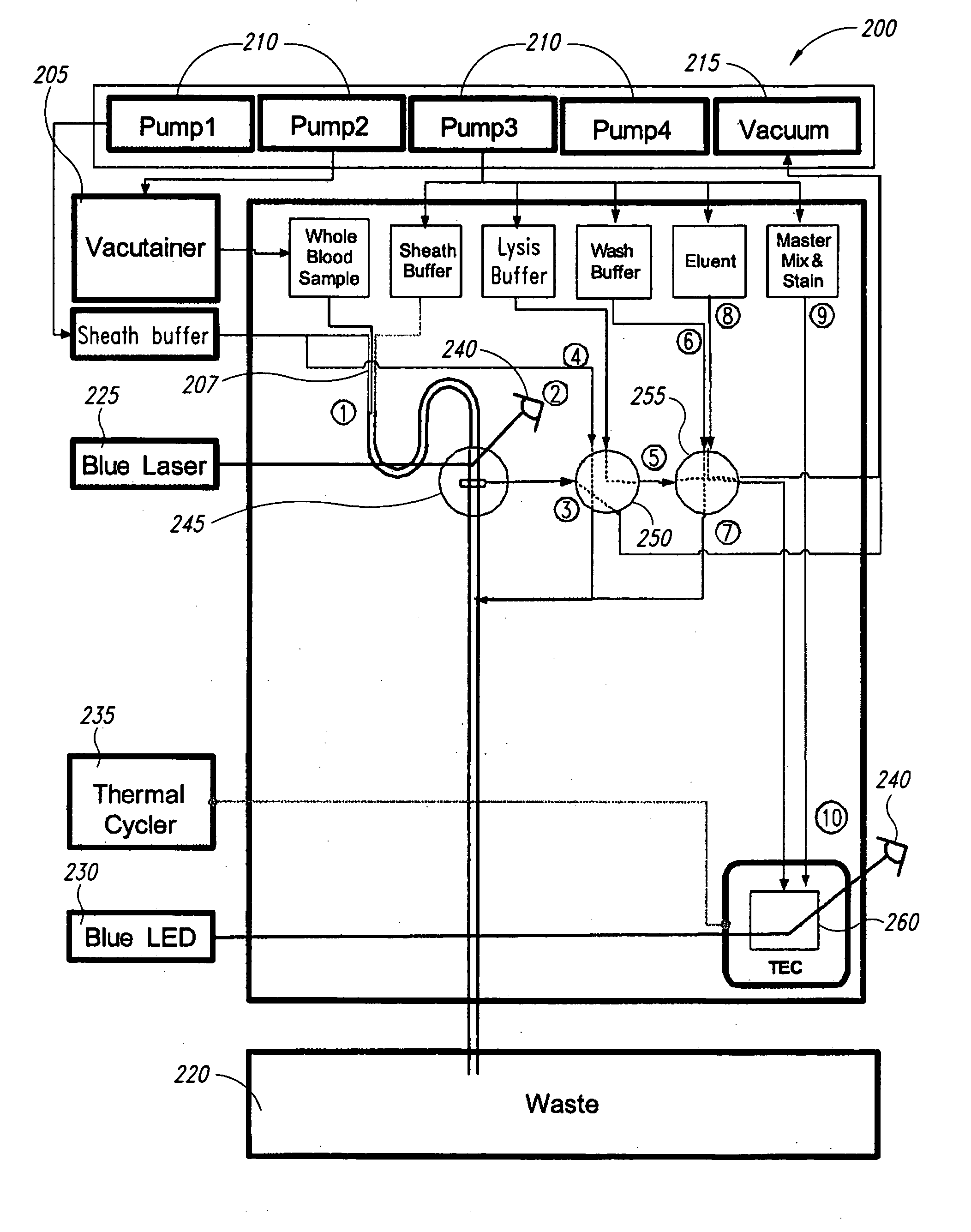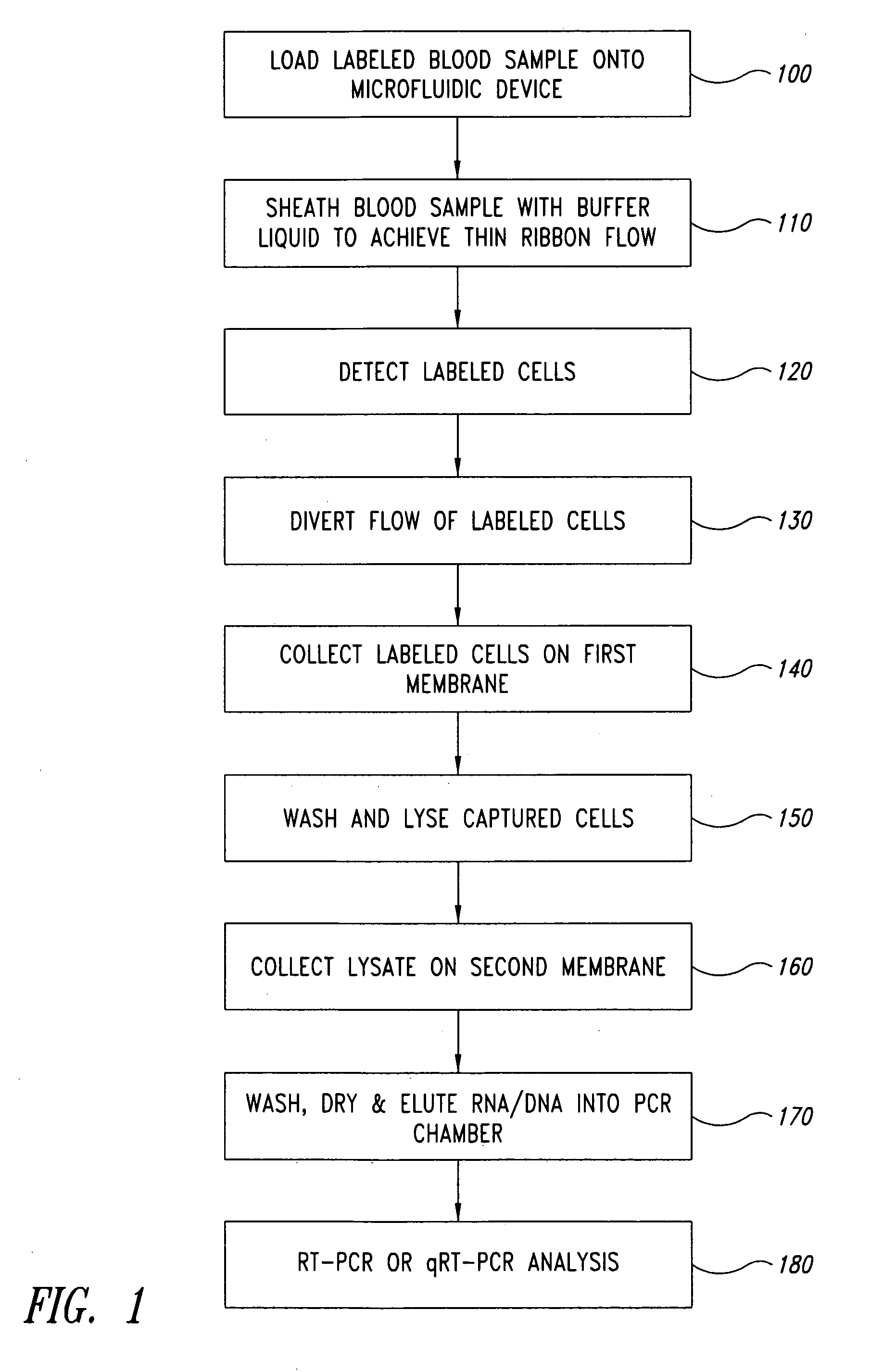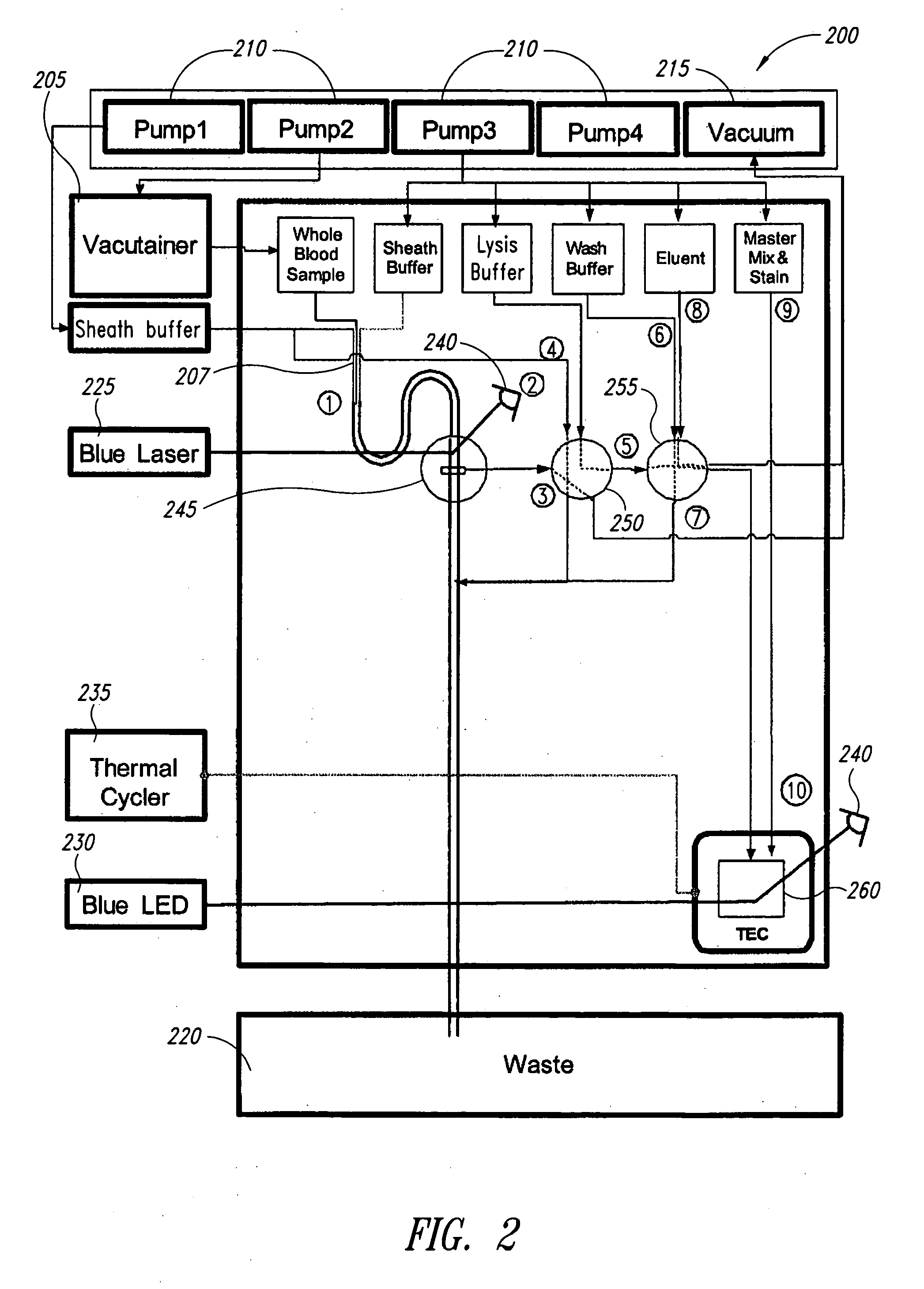Microfluidic rare cell detection device
a rare cell detection and microfluidic technology, applied in the field of microfluidic devices, can solve the problems of lack of sensitivity of current detection methods to reproducibly detect disseminated cancer cells, and the scheme suffers from significant limitations, and achieves the effect of facilitating the detection of labeled cells
- Summary
- Abstract
- Description
- Claims
- Application Information
AI Technical Summary
Benefits of technology
Problems solved by technology
Method used
Image
Examples
example 1
[0069] In the following example, the sample and antibody solutions were moved through the channels of the microfluidic devices by a microFlow™ system, which comprises a controller, pumps (250 μL and 2,300 μL capacity pumps), and a manifold. The microFlow™ system is a commercially available ultra-low-pulse pump system (Micronics, Inc.) with air, vacuum, forward and reverse pumping capabilities controlled by PC based software. In a microfluidic device, fluids can be transported by either air or Fluorinert™ FC-70 (Hampton Research HR2-797). Fluorinert™ FC-70 has a viscosity similar to water, with approximately 75% greater density, and is not miscible with aqueous solutions. In the following examples, Fluorinert™ FC-70 was used to prevent dilution of the sample and antibody solutions during processing.
Lab Card Design
[0070] A microfluidic device having the sub-circuits illustrated in FIGS. 3A-3C and 5A-5E was used for the following cell and / or bead counting and sorting experiments. Th...
example 2
Lab Card and Microfluidic Circuitry
[0082] A microfluidic device having the sub-circuits illustrated in FIGS. 7A-7F was used to evaluate automated liquid handling steps for RNA extraction. The device comprised a 700 μL wash solution chamber, a 150 μL elution solution chamber, a 250 μL lysate / binding solution chamber, and a silica membrane assembly. The silica membrane assembly comprised two circular glass fiber filter type D membranes (GF / D, 8 mm diameter discs, Whatman). The fluidic circuitry used on-card valving to control fluid paths and a simple vacuum to deliver and draw solutions through the GF / D membranes Additionally, a small volume pump (˜150 μL) was used to deliver the elution solution. After loading the device with appropriate solutions, the device automated the following steps: (1) white blood cells in lysate solution were pulled across the silica membrane by vacuum; (2) nucleic acid from the cells were bound to the membrane under the lysis conditions used; (3) a wash s...
PUM
| Property | Measurement | Unit |
|---|---|---|
| size | aaaaa | aaaaa |
| speeds | aaaaa | aaaaa |
| width | aaaaa | aaaaa |
Abstract
Description
Claims
Application Information
 Login to View More
Login to View More - R&D
- Intellectual Property
- Life Sciences
- Materials
- Tech Scout
- Unparalleled Data Quality
- Higher Quality Content
- 60% Fewer Hallucinations
Browse by: Latest US Patents, China's latest patents, Technical Efficacy Thesaurus, Application Domain, Technology Topic, Popular Technical Reports.
© 2025 PatSnap. All rights reserved.Legal|Privacy policy|Modern Slavery Act Transparency Statement|Sitemap|About US| Contact US: help@patsnap.com



